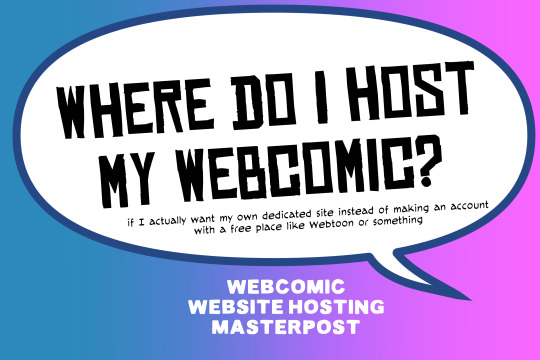#free website traffic generator
Explore tagged Tumblr posts
Text
#free website traffic generator#website traffic generator#traffic generator#buy website traffic#seo and traffic#organic traffic
1 note
·
View note
Text
Benefits and Uses of Traffic Spirit Software
Traffic Spirit Software is a complicated program that objectives to create and growth the site visitors of a website. In addition to bloggers and website proprietors, it’s also utilized by digital marketers to strengthen their logo’s on-line visibility. The website has many capabilities that increase traffic, enhance search engine rankings, and offer thorough analytics. In this text, we shall…

View On WordPress
#best website traffic generator#boost website visits#digital marketing software#free tools to boost website visits#free traffic software#get real traffic#how to increase website traffic#improve search engine ranking#improve website rankings#increase website traffic#organic traffic generator#SEO traffic booster#Traffic Spirit Software#website traffic generator#website traffic tool
0 notes
Text
#free traffic
0 notes
Text

SPIN THE WHEEL OF PAIN
6 Marketing Pain Points Our Agency Solves For Small Business Clients Everyday:
START-UP: I just started my business and I’m eager to grow, where do I begin?
STARTING OVER: I had “a guy” in the past and feel like I’ve been burned, do I have to start over?
MARKETING PLAN: I can’t afford an in-house team, how can I execute my marketing plan?
QUALIFIED LEADS: I generate a lot of traffic on my website but where are my good-fit leads and sales?
POOR ROI: I’m spending money on marketing so why are my results and ROI so poor?
MARKETING COSTS: I already wear too many hats, how can I fast-track my marketing efforts without breaking the bank?
If any of these sound like you, we can help!
Let's discuss your situation and come up with a strategy that fits your budget - https://www.tag-ad.com/contact/
Not ready to talk just yet? Then, use our FREE instant tool that audits your current marketing situation and scores it from 0-100 - https://www.tag-ad.com/marketing-audit-grader/
#pain points#marketing audit#free tool#marketing auditor#small business#marketing grader#business growth#website traffic#sales#return on investment#marketing plan#marketing strategy#generate leads
0 notes
Text
"Much ink has already been spilled on Harris’s prosecutorial background. What is significant about the topic of sex work is how recently the vice president–elect’s actions contradicted her alleged views. During her tenure as AG, she led a campaign to shut down Backpage, a classified advertising website frequently used by sex workers, calling it “the world’s top online brothel” in 2016 and claiming that the site made “millions of dollars from trafficking.” While Backpage did make millions off of sex work ads, its “adult services” listings offered a safer and more transparent platform for sex workers and their clients to conduct consensual transactions than had historically been available. Harris’s grandiose mischaracterization led to a Senate investigation, and the shuttering of the site by the FBI in 2018.
“Backpage being gone has devastated our community,” said Andrews. The platform allowed sex workers to work more safely: They were able to vet clients and promote their services online. “It’s very heartbreaking to see the fallout,” said dominatrix Yevgeniya Ivanyutenko. “A lot of people lost their ability to safely make a living. A lot of people were forced to go on the street or do other things that they wouldn’t have otherwise considered.” M.F. Akynos, the founder and executive director of the Black Sex Worker Collective, thinks Harris should “apologize to the community. She needs to admit that she really fucked up with Backpage, and really ruined a lot of people’s lives.”
After Harris became a senator, she cosponsored the now-infamous Stop Enabling Sex Traffickers Act (SESTA), which—along with the House’s Allow States and Victims to Fight Online Sex Trafficking Act (FOSTA)—was signed into law by President Trump in 2018. FOSTA-SESTA created a loophole in Section 230 of the Communications Decency Act, the so-called “safe harbor” provision that allows websites to be free from liability for user-generated content (e.g., Amazon reviews, Craigslist ads). The Electronic Frontier Foundation argues that Section 230 is the backbone of the Internet, calling it “the most important law protecting internet free speech.” Now, website publishers are liable if third parties post sex-work ads on their platforms.
That spelled the end of any number of platforms—mostly famously Craigslist’s “personal encounters” section—that sex workers used to vet prospective clients, leaving an already vulnerable workforce even more exposed. (The Woodhull Freedom Foundation has filed a lawsuit challenging FOSTA on First Amendment grounds; in January 2020, it won an appeal in D.C.’s district court).
“I sent a bunch of stats [to Harris and Senator Diane Feinstein] about decriminalization and how much SESTA-FOSTA would hurt American sex workers and open them up to violence,” said Cara (a pseudonym), who was working as a sex worker in the San Francisco and a member of SWOP when the bill passed. Both senators ignored her.
The bill both demonstrably harmed sex workers and failed to drop sex trafficking. “Within one month of FOSTA’s enactment, 13 sex workers were reported missing, and two were dead from suicide,” wrote Lura Chamberlain in her Fordham Law Review article “FOSTA: A Hostile Law with a Human Cost.” “Sex workers operating independently faced a tremendous and immediate uptick in unwanted solicitation from individuals offering or demanding to traffic them. Numerous others were raped, assaulted, and rendered homeless or unable to feed their children.” A 2020 survey of the effects of FOSTA-SESTA found that “99% of online respondents reported that this law does not make them feel safer” and 80.61 percent “say they are now facing difficulties advertising their services.” "
-What Sex Workers Want Kamala Harris to Know by Hallie Liberman
#personal#sw#sex work is work#kamala harris#one of the MANY many reasons i hate harris#she directly put so many sex workers at risk. i lost multiple community members because of her#whorephobia#fosta/sesta
436 notes
·
View notes
Text










AI and PDF Crochet Patterns
AI generated images can be great for inspiring projects, but most of the time it's used online to generate revenue for scammers and the like.
Just scrolling through Etsy rn looking for crochet patterns, I've come across several listings (some with false 5 star reviews to boost engagement/trust) where the patterns and images are clearly AI generated and people, unfortunately, have fallen for the listings.
Some of the images might look totally obvious to you, but to the untrained eye they can be convincing.
SOOO, how do you spot AI crochet patterns?
Look at the stitches. Are there pieces that don't seem to stitch into one another? Are the lengths and sizes inconsistent? Some are more obvious than others, but AI fails to replicate consistent textures.
Lighting and saturation. AI images often are vibrant and cartoon-ish. Especially the eyes of projects - usually this is a pretty good giveaway. Additionally, is the image smooth? What's in the background? Does it make sense?
Limited photos on listing. Most legitimate shops are going to have multiple photos of the finished project on the listing - AI is fairly advanced, but not the best at recreating exact images. Does the listing only have one photo? Does it have multiple but with variants between projects (that are meant to be the same)? Are there any videos?
Is it even possible? This can be tricky if you are new to crochet, but as above, take a moment to look at the stitches and the overall shape of the project. Does it look plausable? Especially if they projects say 'no sew'. Additionally, if you have already purchased the pattern - does it tell you how much material you need, and does it make sense? Does it tell you crochet hook size?
Legit photo but AI generated pattern. Sometimes the images are real - but they've been stolen from another creators account and the scam shop has simply asked AI (such as ChatGPT) to write up a crochet pattern. These are less obvious at a glance, but most reputable shops will have social media, consistent themes of crochet projects and reviews with pictures of finished products uploaded by customers.
6. Ok, but what if they use AI but the reviews seem legit? Crochet Baby Duck - this is an AI generated picture and pattern, and while the shop has posted several pictures of the finished project it is clear that it does not match up with the AI generated duck pictured in the listing. The hat, feet, and bill are all different sizes and this is even noted in some of the customer reviews. While this isn't as scammy as straight up using AI generated images/patterns without showing how the finished project looks - it is still taking away from legitimate pattern makers. Being able to design and execute good patterns is a skill, and the prices of legitimate patterns often reflect this. Why does the shop even use AI pictures if they post the real life projects anyway? Cus it drives traffic, and lets be real - the real life plush dolls look no where near as good as the AI images.
This is the same as the walrus - AI generated image and pattern, this is even endoresed by Etsy so you cannot rely on 'Etsy picks' being legitimate as they choose profits over morals.
These patterns are not just limited to Etsy, they are often on Pinterest or websites for 'free' to generate traffic and collect data (asking for your e-mail for the free pattern). Such as this Peacock Crochet IRL figure by u/Echo-o_0 on Reddit.
This is not just limited to crochet, I've seen it in sewing, knitting, and any other PDF downloads that you can purchase or get for free. Unfortunately, it is a simple way for people to make a quick but and face little to no consequences as their store *might* get deleted and even then, they can just start a new one up.
487 notes
·
View notes
Text
Pluralistic: Leaving Twitter had no effect on NPR's traffic

I'm coming to Minneapolis! This Sunday (Oct 15): Presenting The Internet Con at Moon Palace Books. Monday (Oct 16): Keynoting the 26th ACM Conference On Computer-Supported Cooperative Work and Social Computing.

Enshittification is the process by which a platform lures in and then captures end users (stage one), who serve as bait for business customers, who are also captured (stage two), whereupon the platform rug-pulls both groups and allocates all the value they generate and exchange to itself (stage three):
https://pluralistic.net/2023/01/21/potemkin-ai/#hey-guys
Enshittification isn't merely a form of rent-seeking – it is a uniquely digital phenomenon, because it relies on the inherent flexibility of digital systems. There are lots of intermediaries that want to extract surpluses from customers and suppliers – everyone from grocers to oil companies – but these can't be reconfigured in an eyeblink the that that purely digital services can.
A sleazy boss can hide their wage-theft with a bunch of confusing deductions to your paycheck. But when your boss is an app, it can engage in algorithmic wage discrimination, where your pay declines minutely every time you accept a job, but if you start to decline jobs, the app can raise the offer:
https://pluralistic.net/2023/04/12/algorithmic-wage-discrimination/#fishers-of-men
I call this process "twiddling": tech platforms are equipped with a million knobs on their back-ends, and platform operators can endlessly twiddle those knobs, altering the business logic from moment to moment, turning the system into an endlessly shifting quagmire where neither users nor business customers can ever be sure whether they're getting a fair deal:
https://pluralistic.net/2023/02/19/twiddler/
Social media platforms are compulsive twiddlers. They use endless variation to lure in – and then lock in – publishers, with the goal of converting these standalone businesses into commodity suppliers who are dependent on the platform, who can then be charged rent to reach the users who asked to hear from them.
Facebook designed this playbook. First, it lured in end-users by promising them a good deal: "Unlike Myspace, which spies on you from asshole to appetite, Facebook is a privacy-respecting site that will never, ever spy on you. Simply sign up, tell us everyone who matters to you, and we'll populate a feed with everything they post for public consumption":
https://lawcat.berkeley.edu/record/1128876
The users came, and locked themselves in: when people gather in social spaces, they inadvertently take one another hostage. You joined Facebook because you liked the people who were there, then others joined because they liked you. Facebook can now make life worse for all of you without losing your business. You might hate Facebook, but you like each other, and the collective action problem of deciding when and whether to go, and where you should go next, is so difficult to overcome, that you all stay in a place that's getting progressively worse.
Once its users were locked in, Facebook turned to advertisers and said, "Remember when we told these rubes we'd never spy on them? It was a lie. We spy on them with every hour that God sends, and we'll sell you access to that data in the form of dirt-cheap targeted ads."
Then Facebook went to the publishers and said, "Remember when we told these suckers that we'd only show them the things they asked to see? Total lie. Post short excerpts from your content and links back to your websites and we'll nonconsensually cram them into the eyeballs of people who never asked to see them. It's a free, high-value traffic funnel for your own site, bringing monetizable users right to your door."
Now, Facebook had to find a way to lock in those publishers. To do this, it had to twiddle. By tiny increments, Facebook deprioritized publishers' content, forcing them to make their excerpts grew progressively longer. As with gig workers, the digital flexibility of Facebook gave it lots of leeway here. Some publishers sensed the excerpts they were being asked to post were a substitute for visiting their sites – and not an enticement – and drew down their posting to Facebook.
When that happened, Facebook could twiddle in the publisher's favor, giving them broader distribution for shorter excerpts, then, once the publisher returned to the platform, Facebook drew down their traffic unless they started posting longer pieces. Twiddling lets platforms play users and business-customers like a fish on a line, giving them slack when they fight, then reeling them in when they tire.
Once Facebook converted a publisher to a commodity supplier to the platform, it reeled the publishers in. First, it deprioritized publishers' posts when they had links back to the publisher's site (under the pretext of policing "clickbait" and "malicious links"). Then, it stopped showing publishers' content to their own subscribers, extorting them to pay to "boost" their posts in order to reach people who had explicitly asked to hear from them.
For users, this meant that their feeds were increasingly populated with payola-boosted content from advertisers and pay-to-play publishers who paid Facebook's Danegeld to reach them. A user will only spend so much time on Facebook, and every post that Facebook feeds that user from someone they want to hear from is a missed opportunity to show them a post from someone who'll pay to reach them.
Here, too, twiddling lets Facebook fine-tune its approach. If a user starts to wean themself off Facebook, the algorithm (TM) can put more content the user has asked to see in the feed. When the user's participation returns to higher levels, Facebook can draw down the share of desirable content again, replacing it with monetizable content. This is done minutely, behind the scenes, automatically, and quickly. In any shell game, the quickness of the hand deceives the eye.
This is the final stage of enshittification: withdrawing surpluses from end-users and business customers, leaving behind the minimum homeopathic quantum of value for each needed to keep them locked to the platform, generating value that can be extracted and diverted to platform shareholders.
But this is a brittle equilibrium to maintain. The difference between "God, I hate this place but I just can't leave it" and "Holy shit, this sucks, I'm outta here" is razor-thin. All it takes is one privacy scandal, one livestreamed mass-shooting, one whistleblower dump, and people bolt for the exits. This kicks off a death-spiral: as users and business customers leave, the platform's shareholders demand that they squeeze the remaining population harder to make up for the loss.
One reason this gambit worked so well is that it was a long con. Platform operators and their investors have been willing to throw away billions convincing end-users and business customers to lock themselves in until it was time for the pig-butchering to begin. They financed expensive forays into additional features and complementary products meant to increase user lock-in, raising the switching costs for users who were tempted to leave.
For example, Facebook's product manager for its "photos" product wrote to Mark Zuckerberg to lay out a strategy of enticing users into uploading valuable family photos to the platform in order to "make switching costs very high for users," who would have to throw away their precious memories as the price for leaving Facebook:
https://www.eff.org/deeplinks/2021/08/facebooks-secret-war-switching-costs
The platforms' patience paid off. Their slow ratchets operated so subtly that we barely noticed the squeeze, and when we did, they relaxed the pressure until we were lulled back into complacency. Long cons require a lot of prefrontal cortex, the executive function to exercise patience and restraint.
Which brings me to Elon Musk, a man who seems to have been born without a prefrontal cortex, who has repeatedly and publicly demonstrated that he lacks any restraint, patience or planning. Elon Musk's prefrontal cortical deficit resulted in his being forced to buy Twitter, and his every action since has betrayed an even graver inability to stop tripping over his own dick.
Where Zuckerberg played enshittification as a long game, Musk is bent on speedrunning it. He doesn't slice his users up with a subtle scalpel, he hacks away at them with a hatchet.
Musk inaugurated his reign by nonconsensually flipping every user to an algorithmic feed which was crammed with ads and posts from "verified" users whose blue ticks verified solely that they had $8 ($11 for iOS users). Where Facebook deployed substantial effort to enticing users who tired of eyeball-cramming feed decay by temporarily improving their feeds, Musk's Twitter actually overrode users' choice to switch back to a chronological feed by repeatedly flipping them back to more monetizable, algorithmic feeds.
Then came the squeeze on publishers. Musk's Twitter rolled out a bewildering array of "verification" ticks, each priced higher than the last, and publishers who refused to pay found their subscribers taken hostage, with Twitter downranking or shadowbanning their content unless they paid.
(Musk also squeezed advertisers, keeping the same high prices but reducing the quality of the offer by killing programs that kept advertisers' content from being published along Holocaust denial and open calls for genocide.)
Today, Musk continues to squeeze advertisers, publishers and users, and his hamfisted enticements to make up for these depredations are spectacularly bad, and even illegal, like offering advertisers a new kind of ad that isn't associated with any Twitter account, can't be blocked, and is not labeled as an ad:
https://www.wired.com/story/xs-sneaky-new-ads-might-be-illegal/
Of course, Musk has a compulsive bullshitter's contempt for the press, so he has far fewer enticements for them to stay. Quite the reverse: first, Musk removed headlines from link previews, rendering posts by publishers that went to their own sites into stock-art enigmas that generated no traffic:
https://www.theguardian.com/technology/2023/oct/05/x-twitter-strips-headlines-new-links-why-elon-musk
Then he jumped straight to the end-stage of enshittification by announcing that he would shadowban any newsmedia posts with links to sites other than Twitter, "because there is less time spent if people click away." Publishers were advised to "post content in long form on this platform":
https://mamot.fr/@pluralistic/111183068362793821
Where a canny enshittifier would have gestured at a gaslighting explanation ("we're shadowbanning posts with links because they might be malicious"), Musk busts out the motto of the Darth Vader MBA: "I am altering the deal, pray I don't alter it any further."
All this has the effect of highlighting just how little residual value there is on the platform for publishers, and tempts them to bolt for the exits. Six months ago, NPR lost all patience with Musk's shenanigans, and quit the service. Half a year later, they've revealed how low the switching cost for a major news outlet that leaves Twitter really are: NPR's traffic, post-Twitter, has declined by less than a single percentage point:
https://niemanreports.org/articles/npr-twitter-musk/
NPR's Twitter accounts had 8.7 million followers, but even six months ago, Musk's enshittification speedrun had drawn down NPR's ability to reach those users to a negligible level. The 8.7 million number was an illusion, a shell game Musk played on publishers like NPR in a bid to get them to buy a five-figure iridium checkmark or even a six-figure titanium one.
On Twitter, the true number of followers you have is effectively zero – not because Twitter users haven't explicitly instructed the service to show them your posts, but because every post in their feeds that they want to see is a post that no one can be charged to show them.
I've experienced this myself. Three and a half years ago, I left Boing Boing and started pluralistic.net, my cross-platform, open access, surveillance-free, daily newsletter and blog:
https://pluralistic.net/2023/02/19/drei-drei-drei/#now-we-are-three
Boing Boing had the good fortune to have attracted a sizable audience before the advent of siloed platforms, and a large portion of that audience came to the site directly, rather than following us on social media. I knew that, starting a new platform from scratch, I wouldn't have that luxury. My audience would come from social media, and it would be up to me to convert readers into people who followed me on platforms I controlled – where neither they nor I could be held to ransom.
I embraced a strategy called POSSE: Post Own Site, Syndicate Everywhere. With POSSE, the permalink and native habitat for your material is a site you control (in my case, a WordPress blog with all the telemetry, logging and surveillance disabled). Then you repost that content to other platforms – mostly social media – with links back to your own site:
https://indieweb.org/POSSE
There are a lot of automated tools to help you with this, but the platforms have gone to great lengths to break or neuter them. Musk's attack on Twitter's legendarily flexible and powerful API killed every automation tool that might help with this. I was lucky enough to have a reader – Loren Kohnfelder – who coded me some python scripts that automate much of the process, but POSSE remains a very labor-intensive and error-prone methodology:
https://pluralistic.net/2021/01/13/two-decades/#hfbd
And of all the feeds I produce – email, RSS, Discourse, Medium, Tumblr, Mastodon – none is as labor-intensive as Twitter's. It is an unforgiving medium to begin with, and Musk's drawdown of engineering support has made it wildly unreliable. Many's the time I've set up 20+ posts in a thread, only to have the browser tab reload itself and wipe out all my work.
But I stuck with Twitter, because I have a half-million followers, and to the extent that I reach them there, I can hope that they will follow the permalinks to Pluralistic proper and switch over to RSS, or email, or a daily visit to the blog.
But with each day, the case for using Twitter grows weaker. I get ten times as many replies and reposts on Mastodon, though my Mastodon follower count is a tenth the size of my (increasingly hypothetical) Twitter audience.
All this raises the question of what can or should be done about Twitter. One possible regulatory response would be to impose an "End-To-End" rule on the service, requiring that Twitter deliver posts from willing senders to willing receivers without interfering in them. End-To-end is the bedrock of the internet (one of its incarnations is Net Neutrality) and it's a proven counterenshittificatory force:
https://www.eff.org/deeplinks/2023/06/save-news-we-need-end-end-web
Despite what you may have heard, "freedom of reach" is freedom of speech: when a platform interposes itself between willing speakers and their willing audiences, it arrogates to itself the power to control what we're allowed to say and who is allowed to hear us:
https://pluralistic.net/2022/12/10/e2e/#the-censors-pen
We have a wide variety of tools to make a rule like this stick. For one thing, Musk's Twitter has violated innumerable laws and consent decrees in the US, Canada and the EU, which creates a space for regulators to impose "conduct remedies" on the company.
But there's also existing regulatory authorities, like the FTC's Section Five powers, which enable the agency to act against companies that engage in "unfair and deceptive" acts. When Twitter asks you who you want to hear from, then refuses to deliver their posts to you unless they pay a bribe, that's both "unfair and deceptive":
https://pluralistic.net/2023/01/10/the-courage-to-govern/#whos-in-charge
But that's only a stopgap. The problem with Twitter isn't that this important service is run by the wrong mercurial, mediocre billionaire: it's that hundreds of millions of people are at the mercy of any foolish corporate leader. While there's a short-term case for improving the platforms, our long-term strategy should be evacuating them:
https://pluralistic.net/2023/07/18/urban-wildlife-interface/#combustible-walled-gardens
To make that a reality, we could also impose a "Right To Exit" on the platforms. This would be an interoperability rule that would require Twitter to adopt Mastodon's approach to server-hopping: click a link to export the list of everyone who follows you on one server, click another link to upload that file to another server, and all your followers and followees are relocated to your new digs:
https://pluralistic.net/2022/12/23/semipermeable-membranes/#free-as-in-puppies
A Twitter with the Right To Exit would exert a powerful discipline even on the stunted self-regulatory centers of Elon Musk's brain. If he banned a reporter for publishing truthful coverage that cast him in a bad light, that reporter would have the legal right to move to another platform, and continue to reach the people who follow them on Twitter. Publishers aghast at having the headlines removed from their Twitter posts could go somewhere less slipshod and still reach the people who want to hear from them on Twitter.
And both Right To Exit and End-To-End satisfy the two prime tests for sound internet regulation: first, they are easy to administer. If you want to know whether Musk is permitting harassment on his platform, you have to agree on a definition of harassment, determine whether a given act meets that definition, and then investigate whether Twitter took reasonable steps to prevent it.
By contrast, administering End-To-End merely requires that you post something and see if your followers receive it. Administering Right To Exit is as simple as saying, "OK, Twitter, I know you say you gave Cory his follower and followee file, but he says he never got it. Just send him another copy, and this time, CC the regulator so we can verify that it arrived."
Beyond administration, there's the cost of compliance. Requiring Twitter to police its users' conduct also requires it to hire an army of moderators – something that Elon Musk might be able to afford, but community-supported, small federated servers couldn't. A tech regulation can easily become a barrier to entry, blocking better competitors who might replace the company whose conduct spurred the regulation in the first place.
End-to-End does not present this kind of barrier. The default state for a social media platform is to deliver posts from accounts to their followers. Interfering with End-To-End costs more than delivering the messages users want to have. Likewise, a Right To Exit is a solved problem, built into the open Mastodon protocol, itself built atop the open ActivityPub standard.
It's not just Twitter. Every platform is consuming itself in an orgy of enshittification. This is the Great Enshittening, a moment of universal, end-stage platform decay. As the platforms burn, calls to address the fires grow louder and harder for policymakers to resist. But not all solutions to platform decay are created equal. Some solutions will perversely enshrine the dominance of platforms, help make them both too big to fail and too big to jail.
Musk has flagrantly violated so many rules, laws and consent decrees that he has accidentally turned Twitter into the perfect starting point for a program of platform reform and platform evacuation.

If you'd like an essay-formatted version of this post to read or share, here's a link to it on pluralistic.net, my surveillance-free, ad-free, tracker-free blog:
https://pluralistic.net/2023/10/14/freedom-of-reach/#ex


My next novel is The Lost Cause, a hopeful novel of the climate emergency. Amazon won't sell the audiobook, so I made my own and I'm pre-selling it on Kickstarter!

Image: JD Lasica (modified) https://commons.wikimedia.org/wiki/File:Elon_Musk_%283018710552%29.jpg
CC BY 2.0 https://creativecommons.org/licenses/by/2.0/deed.en
#pluralistic#twitter#posse#elon musk#x#social media#graceful failure modes#end-to-end principle#administratable remedies#good regulation#ads#privacy#benevolent dictatorships#freedom of reach#journalism#enshittification#switching costs
801 notes
·
View notes
Text

There are many web hosting companies to choose from if you're taking the plunge into making your own website with a comic content management system (CMS) like ComicControl or Grawlix, a Wordpress comic theme like Toocheke or ComicPress, or a HTML template to cut/paste code like Rarebit. While these solutions are generally free, finding a home for them is... generally not. It can be hard to choose what's best for your webcomic AND your budget!
We took a look at a few of the top hosting services used by webcomics creators using webcomic CMSes, and we put out a poll to ask your feedback about your hosts!
This post may be updated as time goes on as new services enter the hosting arena, or other important updates come to light.
Questions:
💻 I can get a free account with Wix/Squarespace/Carrd, could I just use those for my comic? - Web hosts like this may have gallery functions that could be adapted to display a series of pages, but they are very basic and not intended for webcomics.
📚 Wait, I host on Webtoon, Tapas, Comic Fury, or some other comic website, why are they not here? - Those are comic platforms! We'll get into those in a future post!
🕵️♀️Why does it say "shared hosting"? Who am I sharing with? - "Shared hosting" refers to sharing the server space with other customers. They will not have access to your files or anything, so it is perfectly fine to use for most comic CMSes. You may experience slowing if there is too much activity on a server, so if you're planning to host large files or more than 10 comics, you may want to upgrade to a more robust plan in the future.
Web Host List
Neocities

Basic plan pricing: Free or $5/month. Free plan has more restrictions (1 GB space, no custom domain, and slower bandwidth, among other things)
Notes: Neocities does not have database support for paid or free accounts, and most comic CMS solutions require this (ComicCtrl, Grawlix, Wordpress). You will need to work with HTML/CSS files directly to make a website and post each page.
Hostinger

Basic plan pricing: $11.99/month or $7.99/month with four year commitment (monthly, 1, 2, and 4 year plans available).
Notes: Free domain for the 1st year. Free SSL Certifications. Weekly backups.
KnownHost

Basic plan pricing: $8.95/month or $7.99/month with four year commitment (monthly, 1, 2, and 4 year plans available).
Notes: Free DDOS protection. Free SSL Certifications.
InMotion Hosting

Basic plan pricing: $12.99/month or $9.99/month with three year commitment (monthly, 1, and 3 year plans available).
Notes: Free SSL Certifications, free domain names for 1 and 3 year plans. 24/7 live customer service and 90-day money-back guarantee. Inmotion also advertises eco-friendly policies: We are the first-ever Green Data Center in Los Angeles. We cut cooling costs by nearly 70 percent and reduce our carbon output by more than 2,000 tons per year.
Reviews:
👍“I can't remember it ever going down.”
👍“InMotion has a pretty extensive library full of various guides on setting up and managing websites, servers, domains, etc. Customer service is also fairly quick on responding to inquiries.” 👎“I wish it was a bit faster with loading pages.”
Ionos Hosting

Basic plan pricing: $8/month or $6/month with three year commitment (monthly, 1, 2 and 3 year plans available).
Notes: Free domain for the first year, free SSL Certification, Daily backup and recovery is included. Site Scan and Repair is free for the first 30 days and then is $6/month.
Reviews:
👍“Very fast and simple” 👎“Customer service is mediocre and I can't upload large files”
Bluehost

Basic plan pricing: $15.99/month or $4.95/month with three year commitment (monthly, 1, 3 year plans available).
Notes: Free domain and SSL certificates (for first year only). 24/7 Customer Service. Built to handle higher traffic websites. Although they specialize in Wordpress websites and provide updates automatically, that's almost a bad thing for webcomic plugins because they will often break your site. Their cloud hosting services are currently in early access with not much additional information available.
Reviews:
👎"The fees keep going up. Like I could drop $100 to cover a whole year, but now I'm paying nearly $100 for just three months. It's really upsetting."
👎"I have previously used Bluehost’s Wordpress hosting service and have had negative experiences with the service, so please consider with a grain of salt. I can confirm at least that their 24/7 customer service was great, although needed FAR too often."
Dreamhost

Basic plan pricing: $7.99/month or $5.99/month with three year commitment (monthly, 1, 3 year plans available).
Notes: Free SSL Certificates, 24/7 support with all plans, 97-day moneyback guarantee. Not recommended for ComicCtrl CMS
Reviews:
👍“They've automatically patched 2 security holes I created/allowed by mistake.” 👍“Prices are very reasonable” 👎 “back end kind of annoying to use” 👎 “wordpress has some issues” 👎 “it's not as customizable as some might want“
GoDaddy

Basic plan pricing: $11.99/month or $9.99/month with three year commitment (monthly, 1, 2, and 3 year plans available).
Notes: Free 24/7 Customer service with all plans, Free SSL Certificates for 1 year, free domain and site migration.
Reviews:
👍Reasonable intro prices for their Economy hosting, which has 25GB of storage 👍Migrated email hosting service from cPanel to Microsoft Office, which has greater support but may not be useful for most webcomic creators. 👎 Many site issues and then being upsold during customer service attempts. 👎 Server quality found lacking in reviews 👎 Marketing scandals in the past with a reputation for making ads in poor taste. Have been attempting to clean up that image in recent years. 👎 “GoDaddy is the McDonald's of web hosting. Maybe the Wal-Mart of hosting would be better. If your website was an object you would need a shelf to put it on. You go to Wal-Mart and buy a shelf. It's not great. It's not fancy. It can only hold that one thing. And if we're being honest - if the shelf broke and your website died it wouldn't be the end of the world.The issue comes when you don't realize GoDaddy is the Wal-Mart of hosting. You go and try to do things you could do with a quality shelf. Like, move it. Or add more things to it.” MyWorkAccountThisIs on Reddit*
Things to consider for any host:
💸 Introductory/promotional pricing - Many hosting companies offer free or inexpensive deals to get you in the door, and then raise the cost for these features after the first year or when you renew. The prices in this post are the base prices that you can expect to pay after the promotional prices end, but may get outdated, so you are encouraged to do your own research as well.
💻 Wordpress hosting - Many of the companies below will have a separate offering for Wordpress-optimized hosting that will keep you updated with the latest Wordpress releases. This is usually not necessary for webcomic creators, and can be the source of many site-breaking headaches when comic plugins have not caught up to the latest Wordpress releases.
Any basic hosting plan on this list will be fine with Wordpress, but expect to stop or revert Wordpress versions if you go with this as your CMS.
🤝 You don't have to go it alone - While free hosts may be more limited, paid hosting on a web server will generally allow you to create different subdomains, or attach additional purchased domains to any folders you make. If you have other comic-making friends you know and trust, you can share your server space and split the cost!
Want to share your experience?
Feel free to contribute your hosting pros, cons, and quirks on our survey! We will be updating our list periodically with your feedback!
154 notes
·
View notes
Text
Problems facing modern artists & creators
I've talked with hundreds of artists and creators about the difficulties they face trying to earn a living from their craft.
This post covers two of the big ones (social media algorithms & bargain basement marketplaces), and what tools are available to grow your business despite these issues.
Social Media Algorithms and Audience Ownership
Social media platforms are a godsend for getting your work in front of potential clients and building a loyal fan base.
However as you will all have experienced, it can take a mastermind to figure out what kind of content the algorithm wants you to post, and if you don't do that you'd be as well throwing your content into the void as even your own followers might not see your post, never mind new viewers.
It also means you don't truly own your audience, if you post something slightly controversial your account could be deleted without warning, or perhaps a billionaire buys the site and everyone flocks to a new platform where you have to start growing your following all over again.
Solution: Build a mailing list
This is perhaps the single best marketing tool available to any business, and is sorely overlooked by artists and creators.
It's cost effective and because you own your mailing list it doesn't matter what's happening on social sites, you can always keep in touch with them.
The tricky part is converting people into mailing list subscribers. However I've seen plenty of creators successfully build one by offering incentives including free digital downloads, early access to content, discounts on your store etc.
Those who sign up to your mailing list would be considered high quality followers, someone who is much more likely to convert to a paid client and buy from you again in the future compared to the average follower on social media.
Tools
https://art.page/
https://substack.com/
https://convertkit.com/
Losing clients to undercutting competitors on the same platform/marketplace
If you run your business on a marketplace or platform, your clients are one click away from finding plenty of other choices who are willing to undercut everyone else to land a sale.
These sites have no incentive to make sure that traffic you drive to your profile actually purchase from you. Whether a sale is made through your listing or another seller, they collect their fee either way.
They also use uniform designs which reduce you to a generic product listing. Whilst this can simplify the customer experience, it means you have no control over the sales funnel and ability to differentiate yourself, making it harder to convert potential clients into paying customers.
Solution: Direct clients to your own site
Use your own personal website to make sales from, there are plenty of options with no monthly charge and lower fees than marketplaces. This lets you make dedicated marketing pages showcasing your best work to make a client excited about doing business with you, instead of just being a generic product listing.
Take advantage of marketplaces purely for their customer base. Don't rely on them as your sole business platform. This way, any fees you pay are worthwhile to generate sales you wouldn't have had otherwise.
Tools
https://art.page/
https://www.bigcartel.com/
https://squareup.com/
Interested in more?
There's plenty more I have to share on this topic, including:
How to properly use Print on Demand without getting ripped off
Streamline managing your business so you spend more time creating and growing your business.
How to better utilize your brand to connect with clients and increase sales
So let me know if you’re interested and I’ll get writing!
Transparency
I'm building https://art.page to solve these exact issues, with the goal to create the best all in one site builder for artists and creators that makes running your business easy.
411 notes
·
View notes
Text
Webcomic 'Homestuck' Canceled For Promoting Bad Password Security
(page 456-459)
8/10/2009 Wheel Spin: Parent Bad :( Verdict: INCORRECT
8/11/2009 Wheel Spin: being silly :3c Verdict: CORRECT, but behind at least 10 layers of irony

In the far future, somebody might call this update a time capsule of the 2000s. If computers change significantly, or something. page 456 comments on Dave's bro's computer being password protected, suggesting that this isn't a cultural norm - the newly-released Windows 7 still doesn't require user accounts to have a password. In Homestuck, the password is used to protect 'incredible top secret shit,' so password protecting a personal home computer might be associated with shadier online behavior.
Bro's password is six characters, and is 'the most awesome thing it can be' according to Dave and his bro, so it's probably lilcal. (It could also be puppet, but personally my passwords are always specific characters, song titles etc, not general concepts. I don't know if other people are different. for what it's worth lilcal is also a slightly more secure password than puppet which is A SINGULAR DICTIONARY WORD). Bro also trusts Dave with his password - either because he doesn't think Dave will do anything to mess up his computer, or because he's daring Dave to use it, similar to leaving the Xbox switched on mid-game.
On page 457 we see Bro's desktop, which we can compare to Dave's desktop on page 323. They both have wallpapers from And It Don't Stop, showing us a chain of game recommendations from Bro -> Dave -> John. Dave, like Rose and John, has some character in the names of his desktop folders, while his bro has seven identically named New Folders scattered around the screen. This adds to the sense that Bro is paranoid about people looking at his computer - he's purposefully making it impossible to navigate. The hidden-identity hat and dark glasses iconography on the password entry screen has the same effect.
Bro also has a program called Delirious Biznasty, which has a rad skater dude for its icon. This could be a web browser, but I think it's more likely some kind of torrenting application, I think that'd fit his vibe. The web browsers we know are Typheus, Cetus and Hephaestus, which are all Greek mythological references with cartoon-styled icons, and Delirious Biznasty doesn't fit the pattern. Based on Dave's relationship to his bro, Bro probably uses Hephaestus too and just doesn't have a desktop shortcut.
Dave and his bro both use the Complete Bullshit content aggregator, which we are forced to witness on pages 458 and 459. Content aggregators are pretty common customizable feeds that people use to keep up with a lot of websites at once, when checking 20+ separate sites a day gets too time consuming. RSS readers are a common form of this that can host a lot of different types of content, but there are also aggregators specifically for webcomics. These are controversial - they're generally well intentioned projects made for free by webcomic fans who want to check for updates easily and keep up with a lot of stories, and want to help other fans do the same. However, they can redirect traffic away from actual sites that host webcomics, meaning that independent webcomic artists might miss out on ad revenue or merch sales, or are less likely to sell ads because their sites don't look as well-trafficked as they are. I don't know if Andrew Hussie has a strong opinion on comics aggregators, but it's possible this terrible to use, unstable and unreadable version is a criticism of the concept.
Complete Bullshit also feels like Dave's bro's equivalent of Serious Business, as they're both digital programs with adjective-noun titles. I wonder if Rose's mom will get her own software.
It's sweet that Bro keeps up with Dave's projects, including Sweet Bro & Hella Jeff and his GameBro review blog. It shows that their relationship isn't 100% one sided, Bro cares for Dave and/or thinks he's cool at least a little bit. It's also fun that Dave is checking to see if his own webcomic has updated, which could be bad memory due to having a lot of projects on the go, or could be Dave checking to make sure his update has gone through and posted successfully. Very reasonable, as it must be a challenge to upload such high quality images.
I will probably make a post digging into Sweet Bro & Hella Jeff at some point, but I'm still peeling the onion of its irony right now so I'll just say: when exactly did Dave find the time to make these comics?
#homestuck#reaction#i actually have a deep curiosity abt other peoples passwords but it is an incredibly suspicious question to ask anyone#chrono
57 notes
·
View notes
Text
7 free startup ideas worth $1M-$1B
Customizable News Settings - A news website that generates three versions of every news story: a right-wing version, a left-wing version, and a centrist one. You can set your preferences depending on the topic - say you're right-wing on economics, but left-leaning on immigration. Or you can cycle between versions while reading an article to get a comprehensive overview of the issue at hand.
Twitch, but for Uber - With all the drama they have to deal with, independent contractors can gain a second revenue source simply by streaming their jobs. Rather than just offering rides, they can be hired to drive around performing chores and various tasks. The more outrageous the task, the more eyes they're likely to get on their stream. The more popular the stream, the more people calling in who want to be a part of the program.
Panera Lemonade, Your Way - Let the customer take control by deciding how many milligrams of caffeine they can handle. With sufficient warning about the risks, this puts the responsibility back on the consumer, allows you to upcharge for extra caffeine, and creates viral marketing from customers competing to see how high they can go. Variations of this can be created for other menu items, e.g., a version of the One Chip Challenge where the customer decides how much capsaicin to sprinkle on.
Shein, for NFTs - Whenever an NFT project hits the mainstream, there are always going to be people who miss out on being able to purchase one. This creates room in the market for 'knockoffs' - NFTs that mimic the aesthetic of the original, using similar but legally distinct AI art that uses the original set as training data, run on a parallel blockchain. Since the images themselves aren't tied to the blockchain, you can mint the NFTs beforehand and then change the image at the link to whatever happens to be in fashion at the time.
Twitch Chat Plays YouTube - Add a level quality control to AI-generated YouTube videos by allowing users to submit suggestions and vote on the results beforehand. Users can submit Wikipedia articles or movie summaries to be converted to text-to-speech, suggest keywords for the accompanying AI-generated animation, and vote on the best combinations. Users who submit winning suggestions get a portion of the ad revenue.
Buses, but Worse - The current obstacle hindering self-driving car technology is their difficulty adapting to unexpected scenarios. So instead plot a route around the city that minimizes roadway obstacles and heavy traffic, map out that route extensively to provide a model for the autopilot, and you can have a fleet of self-driving cars patrolling that circuit. Passengers can board and get off anywhere along the route.
Twitter, but for Bots - A social media platform populated entirely by bots, all programmed to maximize engagement. Memetic evolution in the wild as the bots latch on to trending keywords, spam each other with AI-generated meme images, mock up t-shirts hawking each other's designs, getting more and more degraded with each sub-iteration. Real people can't make accounts on the platform, but count for views and interactions as they stop to gawk at the virtual ecosystem. Advertisers can pay to have their brands injected directly into the discourse, like throwing a pumpkin into the polar bear cage at the zoo.
210 notes
·
View notes
Text
Saw a post that made me actually pace with rage complaining about people donating THEIR OWN MONEY to Ao3 and saying that Ao3 were just hoarding money which. Interesting take. I cannot stress enough to people that running websites COSTS MONEY. Ao3 is not a static entity. Server space COSTS MONEY, and Ao3 has an archive that would put most websites in the ground. The internet traffic it receives ON THE DAILY would crash PLENTY of sites run by PAID PROFESSIONALS. GOD. It is ENTIRELY AD FREE. It almost never goes down, which is ASTOUNDING for a volunteer run site of its size and scope. I cannot stress enough what a gift Ao3 is, and how astounding it is that it survives solely on donations. Do any of you fucking people understand how rare it is to have a completely fan owned website on the modern internet???
Also, shaming people for paying money for services they enjoy is fucking hypocritical. People can very much donate to charities and gofundmes and ALSO pay for extra things for pleasure on the side. I am willing to bet that every single person on the planet has made a self indulgent purchase. You have no idea how people are choosing to spend the rest of their money, and frankly it’s none of your goddamn business.
ALSO op’s final comment was that people should just pay the fic writers. Which. DO NOT FUCKING DO THAT. you can *tip* fanfic writers for being a GENERAL GIFT AND BLESSING IN YOUR LIFE, but paying for fic IS NOT LEGAL. fic dodges breaking the law by being NON PROFIT. this is why fuckers selling bound fanfic are causing massive problems. Learn your history, Jesus CHRIST.
#Ao3#fandom wank#fandom stuff#fandom#archive of our own#my post#I try not to rage post BUT#BUT#Jesus H CHRIST
61 notes
·
View notes
Text

Little libraries -
Free little Libraries are a great passive mutual aid project. Originally inspired by DIY projects they are easy to build, are generally low maintenance once established, creative and fun artworks within themselves, and its a great way to introduce a gift economy into your neighborhood!



History-
2009- Todd Bol of Hudson, Wisconsin, built a model of a one room schoolhouse. It was a tribute to his mother; she was a teacher who loved to read. He filled it with books and put it on a post in his front yard. His neighbors and friends loved it, so he built several more and gave them away.
UW-Madison’s Rick Brooks saw Bol’s do-it-yourself project while they were discussing potential mutual aid projects. They were inspired by community gift-sharing networks, “take a book, leave a book” collections in coffee shops and public spaces, and most especially by the philanthropist Andrew Carnegie.
2010 the name Little Free Library was established and the purpose of these Little Free Library book exchanges became clear: to share good books and bring communities together.As Bol and Brooks continued to give away Little Free Libraries with wooden charter signs, engraved with official charter numbers, curiosity and demand for more Libraries grew. The acceleration centered on the enthusiasm of early adopters and stewards, who were crucial advocates. Some small grants and informal partnerships began to have an impact on Little Free Library’s ability to keep up with demand.
2011 brought national media attention, and by the end of the year there were nearly 400 Little Free Libraries in existence. That number would skyrocket to over 4,000 Libraries within a year.
2012 Little Free Library became a registered 501(c)(3) nonprofit organization in the states!
Little Free Libraries have continued to grow by leaps and bounds every year. In 2022 we surpassed 150,000 registered Libraries in more than 120 countries worldwide. Even establishing an online map and app to help people locate the libraries!





How do I do this?
The little library website hosts a bunch of plans and blueprints to make a library or get ideas for locations. Even having ready to order kits if you want!
You will need either land or public approval to establish one however, this can be by the city, neighbours, or other public spaces but they are technically put on private land. You wont find anyone ho would object to their installation but I would not recommend just installing one unless your okay with it being taken down.
Pick a location that has a lot of foot traffic and be highly visible to anyone nearby and is accessible as possible.
Register your library! You can get an official charter sign by doing this step!!
Fill it up with books!!
#solarpunk#ref#sprout guide#reaping week#anticapitalism#mutual aid#little libraries#cottage core#reading#books
214 notes
·
View notes
Note
i'm sure that you get asks like this a lot so i apologize if i'm beating a dead horse to the ground LOL but for someone who owns an online shop, do you have any tips for beginners just starting off / looking into starting one? not really asking for anything specific, but just rather anything you'd be willing to share based off your experience...!
OOF okay so there's quite a lot that goes into running an online shop, so best general advice i can give is to do your research! there's a lot to an art shop that you need to consider and understand before running into things. sometimes it's a bit hard to figure out where to start your research though, so here are the biggest things i think you should look into first:
manufacturing your stuff: some artists hand make merch at home, but if you don't have the means to do that then you'll need to find places that can manufacture your designs for you. like if you're making stickers, look into custom sticker printing sites like StickerApp or Sticky Brand. a lot of manufacturers will have sample packs you can order for free to get a better idea of what their items are like.
shop hosting websites: figuring out where to actually host your shop and sell your art is very important - my shop is through Big Cartel which i really like, but isn't for everyone. other shop hosting sites include Shopify and Etsy, and Shopify is sorta similar to BigCartel from what i know? Etsy is very different, selling through Etsy means your stuff will be easier for people to find through the Etsy search function (BigCartel and Shopify don't have this, any traffic you get will have to come from off-site and you'll have to advertise the shit outta it). HOWEVER Etsy has some pretty bad practices when it comes to how they treat the artists that sell on there. most people i know that use/used Etsy have been burned by them in some way, so be warned.
money stuff (accounting, budgeting, taxes): LEARN HOW TO MAKE SPREADSHEETS!! spreadsheets with just a few simple addition/subtraction formulas will be a huge help when it comes to budgeting and keeping track of your expenses - and you'll need to keep track of ALL your expenses! taxes can also be tricky, most shop hosting websites will collect sales tax for you but do some research on what freelance/small business taxes look like in your country.
shipping: the two main aspects to shipping are your shipping supplies and shipping labels. you'll want to find mailers that fit and protect whatever art you're selling, and tbh the best way i figured this out was from buying from other artists and seeing how they packaged their stuff! shipping labels are their own beast - some sites like Etsy will make them for you, but not BigCartel. i use a site called Pirate Ship to import BigCartel orders and buy shipping labels for them.
thats about all i got for now, running an online art shop is very hard not gonna lie!! but it's very fun and rewarding to make your own funny items :] best of luck to ya!!
67 notes
·
View notes
Text
INTRO POST (*°▽°*)
HI! My name is Thomas! I'm a writer, artist and general silly lil guy
About me:
pronouns: he/they/she (in order of preference, but I love it when people mix it up - if you want to get accurate pronouns, feel free to ask, I change a lot)
I am aroace, genderfluid, and non binary :)
I'm into:
sanders sides
batfam
Traffic smp and hermitcraft (the bean man is my favourite i will fight you) (I will also lose the fight this has been proven but still know that I will fight you)
Aroace stuff (separately or together)
I do occassional art (tag is #thomas' art, or for my pet project, #the hand series)
for any ranchers fans, I wrote a fanfic (on my ao3) - or search "#respawn denied au" on my tumblr
History!!! I am a history nerd :D My favourite time period/area is the plantagenets and the tudors (and I understand that this is the ancient greek nerd website, but I am an ancient roman nerd. sorry guys)
my youtube (I made an animatic!!)
my ao3 (I write fanfics!!)
my writing blog (I write oc stuff!!)
Have fun!
\ (*^▽^*) /
-Thomas
#aromantic#asexual#lgbtqia#queer#writeblr#aro#sanders sides#batfam#transblr#non binary#transgender#intro post#thomas rambes#genderfluid#trafficblr
54 notes
·
View notes
Text

Ice Core Report ❄️ August 2024
Decided to do a little editorial check in at the end of each month. Most of you probably don't know that, while Lauren is my real first name, that my blog is actually named for a massive ice sheet that once lay over the place where I live (the Laurentide Ice Sheet). Thus, this is a report from my ice core.
#1 Story: Suggestion Box
This one was a huge surprise for me. It took off immediately, and I had not seen that coming. I'd had this image saved in my "had potential" folder for probably three weeks before I decided on how to tell the story. It went through an iteration where this was an ice skating rink, then it was a sandwich shop. I think one draft had a "five dollar footlong" joke in it. But ultimately I liked "arcade" the best.
#2 Story: Enjoy Your Stay
This was based on fun joking conversation I had with @hypno-potion and as the scaffolding we were joking about kept getting more elaborate I was like "No there is definitely something here." I'm glad you all agreed.
#3 Story: Kitty Pet Saga
I saw this picture and immediately knew what the story was going to be. Sometimes I see an image and think "There's something here if I look hard enough" and sometimes I see an image and a fully formed idea just jumps right out of it.
#4 Story: Oh My
This is a story I actually wrote quite some time ago for an old defunct website that never really got any foot traffic. I'm glad I brought it over, because it's one of my personal favorites. The only fauxcest story in the top five this month. That's one of those kinks I think I'm just going to have to accept that you guys aren't as into as I am (and I have the data to validate that claim).
#5 Story: Daughters and Suns
The only true repost from my old blog and the only part of a series in the top five this month. This series is my favorite thing I'm writing right now (though this entry isn't my favorite in the series). There's a lot more coming so I hope you're enjoying as much as I am.
Sunda Systems
We're half way through Season 1 of my Sunda Systems investigative mind control conspiracy story. Our investigator has made several contacts and visited the campus first-hand. She also might be starting to feel some effects from her various encounters, and her keen eye for detail is missing a few clues that are staring her right in the face. But I'm sure the date she's got lined up will give her some much needed relaxation.
Please please please share this story and feel free to get interactive with it! I've put some real effort into it and I've never written such a slow burn before. I'm enjoying the ride, and I've got some GOOD (I think) twists and turns coming. I think this format could be fun to play around with as an audience. Post your theories! I love seeing that folks are engaging with more than just the like button.
Update of Magics & Mesmerism
Some of you are aware that I'm working on an erotic mind control TTRPG called Magics & Mesmerism. I'm still plugging away. As we speak, I'm writing skills for the Innovator character class. As a treat, I'd like to share with you an except from the page on Hypnotic Foci:

General Thoughts
Every story in the top five this month is a FEMALE SUB story. Noted. I tend to favor that in my writing, too, which is interesting because I think Female Over Male stories are hotter, probably because of the subversion of expectations. I'm a slut for subversion of expectations.
I think that's everything. Love you all and I'm very excited for you to see what's coming in September. One of my favorites that I wrote comes out tomorrow, and on the 13th you'll be introduced to your first Force of Nature.
Till then, keep reading, keep messaging, keep asking, and if you're feeling generous, keep donating.
44 notes
·
View notes